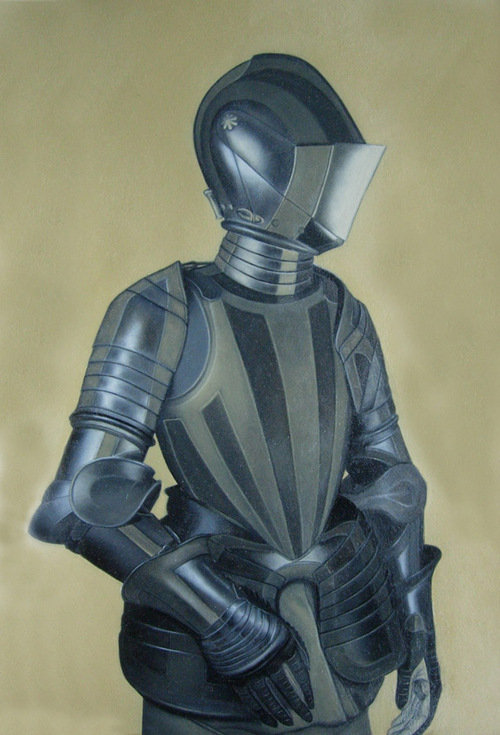7 artistas y 7 criticos
dal 11/8/2008 al 4/9/2008
Segnalato da
11/8/2008
7 artistas y 7 criticos
Clasica & Moderna, Buenos Aires
Organized by Lucas Fragasso

Artist: Martín Giménez
Critic: Charly Espartaco
Martin Giménez’s show at Clasica & Moderna consists of two canvases of large dimensions in oil on linen, three photographs, two of them depicting the first copper sculpture of Boniface VIII, originally located in the year 1300 at the Palazzo del Comune in Bologna. The third one, an image of one of his paintings, and a book, the Princeps Urbium, placed inside a vitrine.
All of these objects turn themselves into receptors of a meaning, at the same time unique and mutable, which moves constantly from one to the other transforming itself, as in a kind of infinite semiosis, in which each work operates as the interpretant of the other.
In the first canvas, Giménez evokes the figure of Janus Pater that appears for the first time in this temporal world as the image of a soldier with two birds.
Janus Pater, Deus Deorum, god of the gods for being the most ancient, is also the god of keys and doors, a prefiguration of Saint Peter, and also the introducer of the months: the first month, January, takes its name from him, and Juno dedicates to him the first day of the year. This painting is conceived not as a representation, but as the presence of this obscure essence itself.
The second canvas and the documentation-photograph of a previous painting, takes what Giménez considers the inevitable form of the sacred: the vertical armour. In the first version, the character that inhabits it has the face uncovered, following the structure of previous works in which a male character, a man or a boy, is located in a scenery where he interacts with some object. Instead, in the second work, the armour is the occult abode of Minerva, goddess of wisdom, intelligence and arts.
The two photographs of the first propitiatory sculpture of Pope Boniface VIII are practically identical, with a slight variation in the angle of the shot. Originally located at the Palazzo del Comune in Bologna, this portrait is one of the many that Boniface VIII commissioned during his life, unusual fact for a supreme pontiff until that moment. A controversial figure, this pope is remembered, among other things, for being the last one to consider the spiritual authority over the temporal power, that is to say, the Church over the people and the Government.
Martin Giménez’s persistently monochrome tint warm works, always deal with transcendent values, of which the artist considers himself only as a medium, the one in charge of portraying these values in works that could not be different from what they are, almost as if he had no other way to do them.
In this respect, one also understands the strong link that his work has with the idea of the ritual. The ritual is an act that keeps alive religious concepts and beliefs transforming these spiritual ideals in performative ones. When the rite is separated from the belief in the values to which it alludes and which tries to perpetuate, it becomes a mechanical and meaningless action.
The re-creation of inexistent rituals in Giménez’s work is constant and it can be understood as the intention to bring alive again by the means of form, the value of the ritual. Form, never sundered from content for the artist, reactivates profound meanings actualizing its importance and effectivity.
The Princeps Urbium, a book that explains the civilta romana in all its details, conceptually closes in its totality the different elements taking part of the exhibition, which in this way is undoubtedly perceived as one single work with a signification circulating ad infinitum.
Clasica & Moderna
Av. Callao 892 - Buenos Aires





